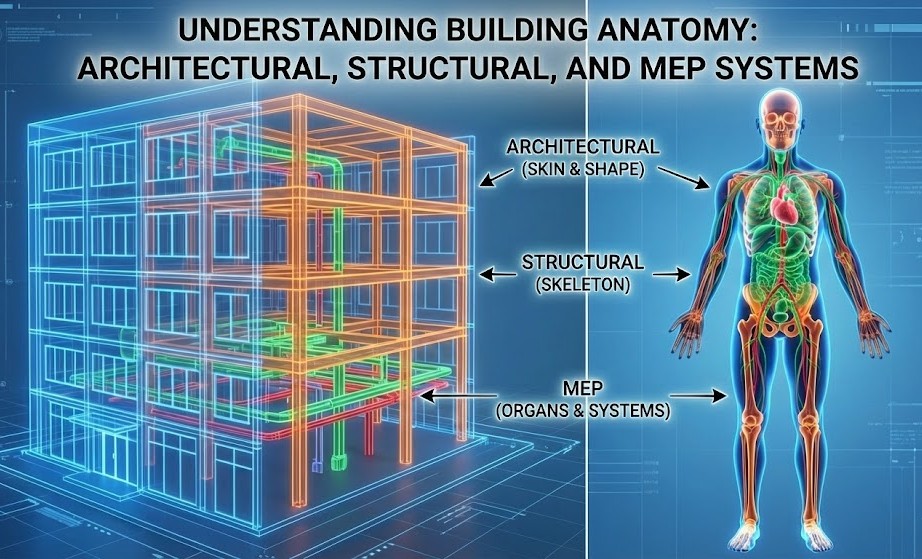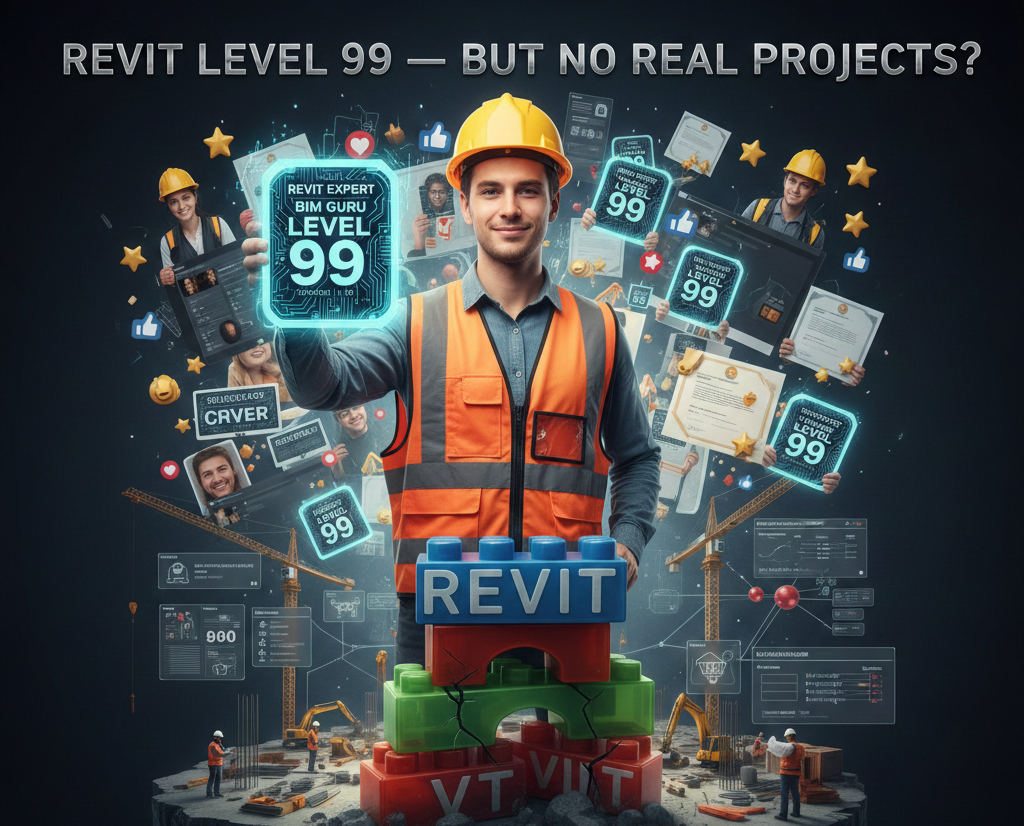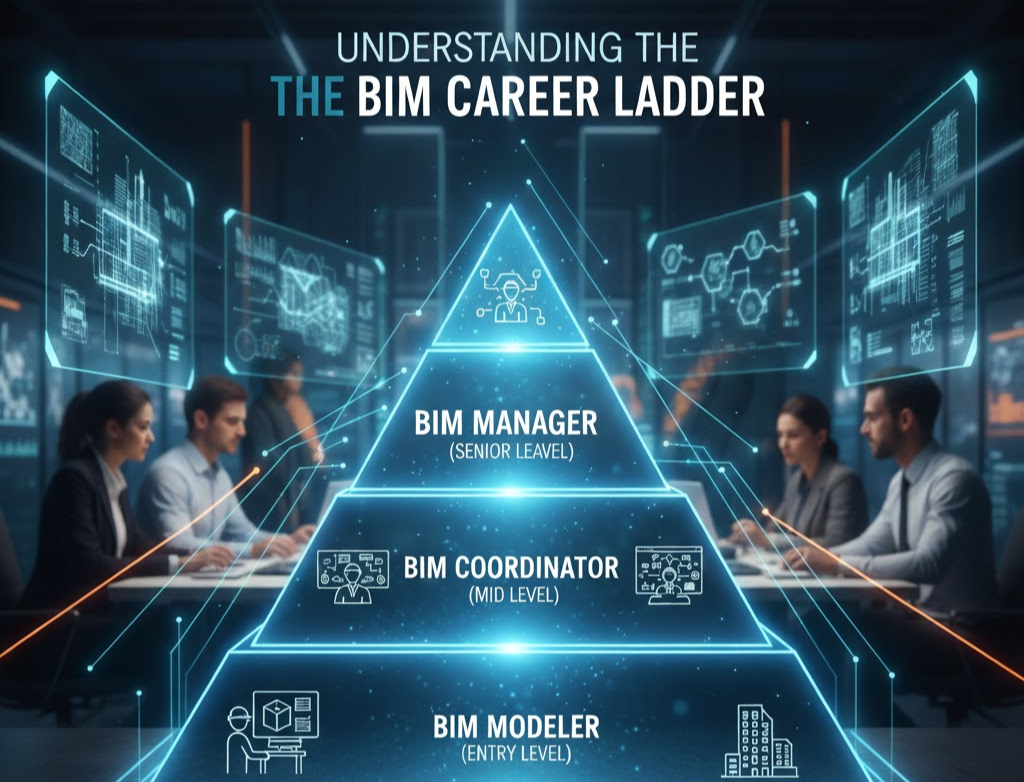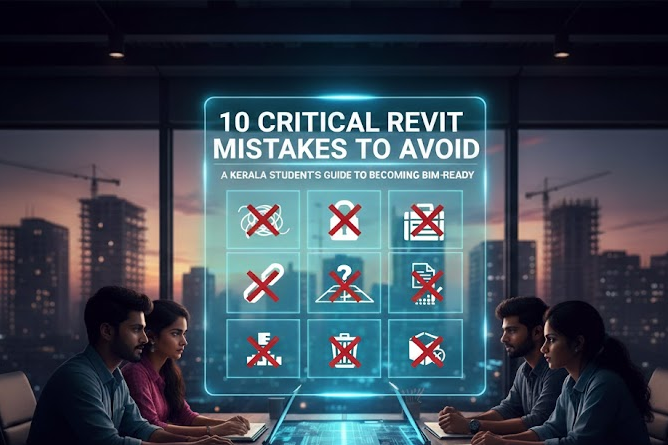
Architectural vs Structural vs MEP: Understanding Building Systems Like the Human Body
Because a building is more like a human than you think. Buildings Are Not Just Structures — They Are Living Systems Many people entering construction or BIM struggle to clearly understand the difference between Architectural (ARC), Structural (STR), and MEP disciplines. At first glance, they can feel like separate technical
Know More
Most In-Demand BIM Specializations in 2025: Which BIM Course Should You Choose for the Highest Career Growth?
The world of Building Information Modelling (BIM) is evolving at an unprecedented pace, and with this transformation comes a tremendous surge in career opportunities. Across regions such as India, the Middle East, Europe, and Southeast Asia, companies are moving away from traditional CAD workflows and embracing BIM-based project delivery. This
Know More
Revit Level 99 — But No Real Projects?
In 2025, the AEC industry is experiencing a new digital trend: almost everyone online suddenly claims to be a “Revit Expert,” “BIM Specialist,” “BIM Guru,” “No.1 in Revit,” or even a “BIM Master.” Social media is overflowing with glamorous titles, quick certification posts, and screenshot-heavy portfolios. But when you look
Know More
Why It’s Time for the AEC Industry to Move Beyond AutoCAD and Embrace Revit + BIM
“We’ve Been Doing It This Way for 40 Years — and It Works!” The Old Habit That’s Holding Us Back If you have ever tried to introduce Revit or BIM to a senior architect, engineer, or contractor, chances are you’ve heard something like this: “We’ve been doing it this way
Know More
Can a Fresher Really Become a BIM Coordinator? — The Truth Behind the Title
Across Kerala — and increasingly across India — several BIM training institutes have begun advertising programs titled “BIM Coordinator Course for Freshers.”At first glance, this sounds attractive. The title feels senior, authoritative, and career-boosting. Who wouldn’t want to skip a few steps and jump directly into a leadership-oriented BIM role?
Know More
Avoid These 10 Critical Revit Mistakes: A Kerala Student’s Guide to Becoming BIM-Ready
Learn smarter. Model smarter. Build smarter — with BIM Cafe. Why Revit Mastery Matters in Kerala’s Job Market Revit is no longer an optional skill — it is now the core of digital construction and BIM workflows. From architecture and civil engineering to MEP design and interior fit-outs, companies in
Know More
BIM Internship: How to Secure Your First BIM Experience
Why a BIM Internship is the Smartest Way to Start Your Career In today’s fast-evolving construction landscape, Building Information Modelling (BIM) has become the foundation of modern design and project management. No longer limited to 3D modelling, BIM integrates architecture, engineering, and construction data into a single intelligent platform —
Know More
BIM Course with Placement: Your Pathway to Build a Global Career in the UAE and Abroad
Why BIM Skills Are the Gateway to Global Opportunities When BIM-based projects began gaining traction in the Middle East, it became evident that Building Information Modelling (BIM) isn’t just software; it’s a new way of thinking about construction. Today, BIM connects every phase of a project — from design and documentation to
Know More
How BIM is Powering India’s Smart City Projects: What Students & Engineers Should Know
India’s ambitious Smart City Mission is reshaping how infrastructure is designed and delivered. From Kochi Metro Rail to GIFT City in Gujarat, modern projects are moving away from traditional workflows and adopting Building Information Modelling (BIM) — the digital language of intelligent urban development. For architects, civil engineers, and MEP
Know More
Choosing the Right BIM Course in Kerala: A Complete Student Roadmap
If you are a student, recent graduate, or professional in architecture, civil, or MEP engineering, you’ve probably noticed a major shift in how buildings are designed, executed, and managed — and at the center of this change is Building Information Modeling (BIM). BIM is no longer just a software tool;
Know More
Why MEP Codes Matter: The Hidden Rules That Keep Buildings Safe, Smart & Sustainable
Every building tells a story — of design, safety, comfort, and function. But behind its shining façade lies an invisible network of systems that make it all work: the air we breathe, the light we use, and the water we rely on every day. These lifelines are governed by something
Know More
Understanding LOD & LOI in BIM: The 2025 Smart Guide
In the fast-evolving world of Building Information Modeling (BIM), two small acronyms — LOD and LOI — carry enormous weight. They define not just how detailed your digital model looks, but also how intelligent and data-driven it truly is. By 2025, as global BIM standards tighten and digital twin technologies
Know More